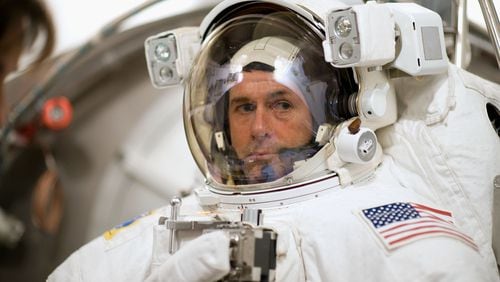A Georgia Tech graduate is commanding the NASA and SpaceX mission to the International Space Station, which has been delayed by weather.
R. Shane Kimbrough was selected by NASA in 2004. He completed his first spaceflight in 2008 on STS-126, where he spent almost 16 days on the mission to expand the crew living quarters to accommodate a six-member crew. During the mission, he performed two spacewalks.
Kimbrough was born June 4, 1967, in Killeen, Texas. He graduated from The Lovett School in Atlanta in 1985. He received a bachelor’s degree in aerospace engineering from the U.S. Military Academy in West Point in 1989 and was commissioned as a second lieutenant in the Army.
He entered the U.S. Army Aviation School and was designated an Army aviator in 1990. Kimbrough was assigned to the 24th Infantry Division (Mechanized) in Fort Stewart and was deployed to Southwest Asia, where he served in Operation Desert Storm.
In 1994, he was assigned to Fort Bragg, North Carolina, where he commanded an Apache helicopter company.
After earning his masters at Georgia Tech in 1998, he was assigned as an assistant professor at West Point.
Kimbrough was selected as an astronaut candidate by NASA in May 2004. In February 2006, he completed astronaut candidate training.
Kimbrough completed his first spaceflight in 2008 on the space shuttle Endeavour, logging a total of 15 days, 20 hours, 29 minutes and 37 seconds in space and 12 hours and 52 minutes in two spacewalks.
He launched on Oct. 19, 2016, as part of Expedition 49/50. He became the commander of the International Space Station a week after he reached the ISS and remained so until he departed almost six months later. During that time, he performed four spacewalks, logging more than 26 hours.
Kimbrough now has a total of six spacewalks and over 39 hours outside the orbiting laboratory.







